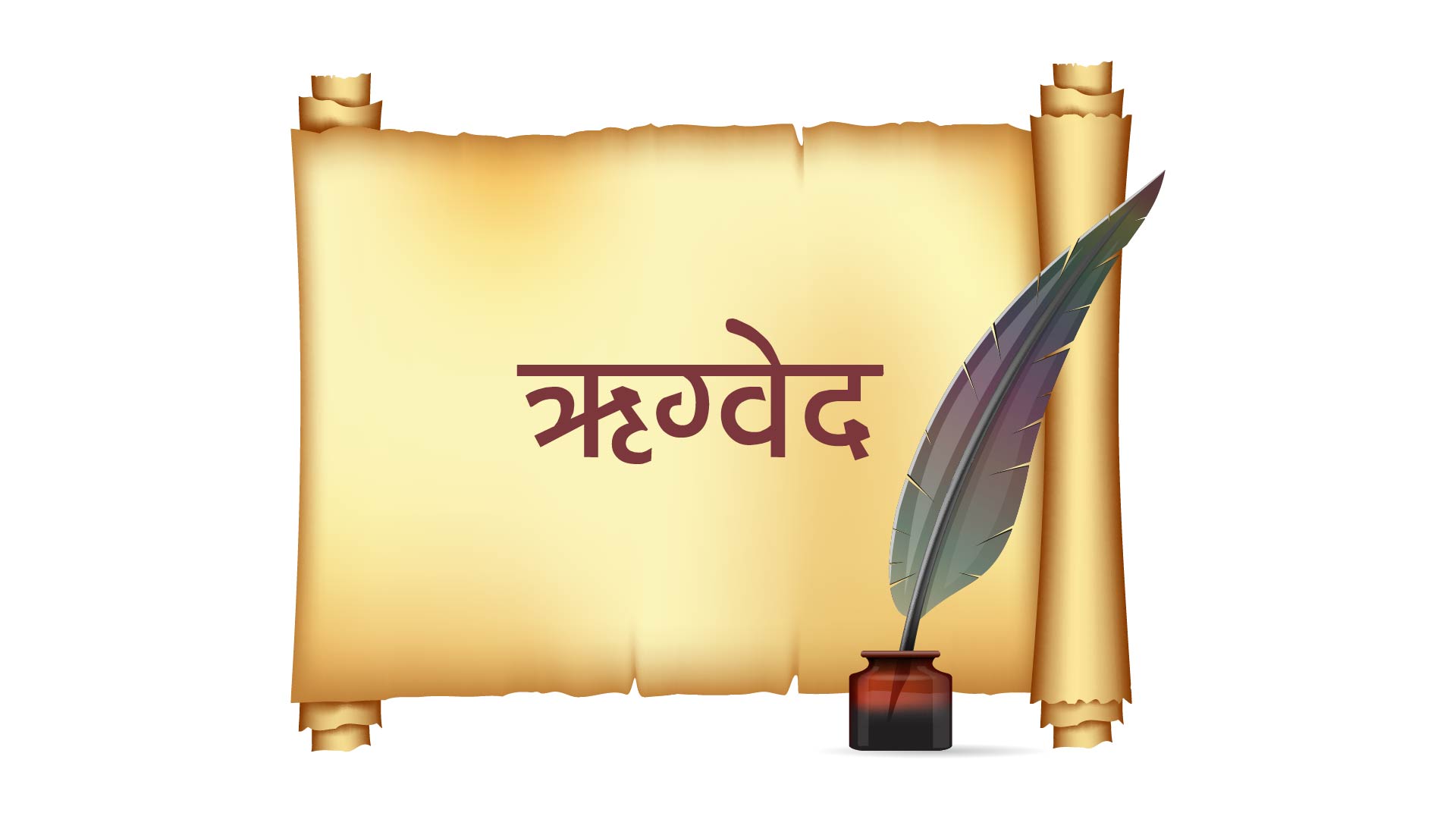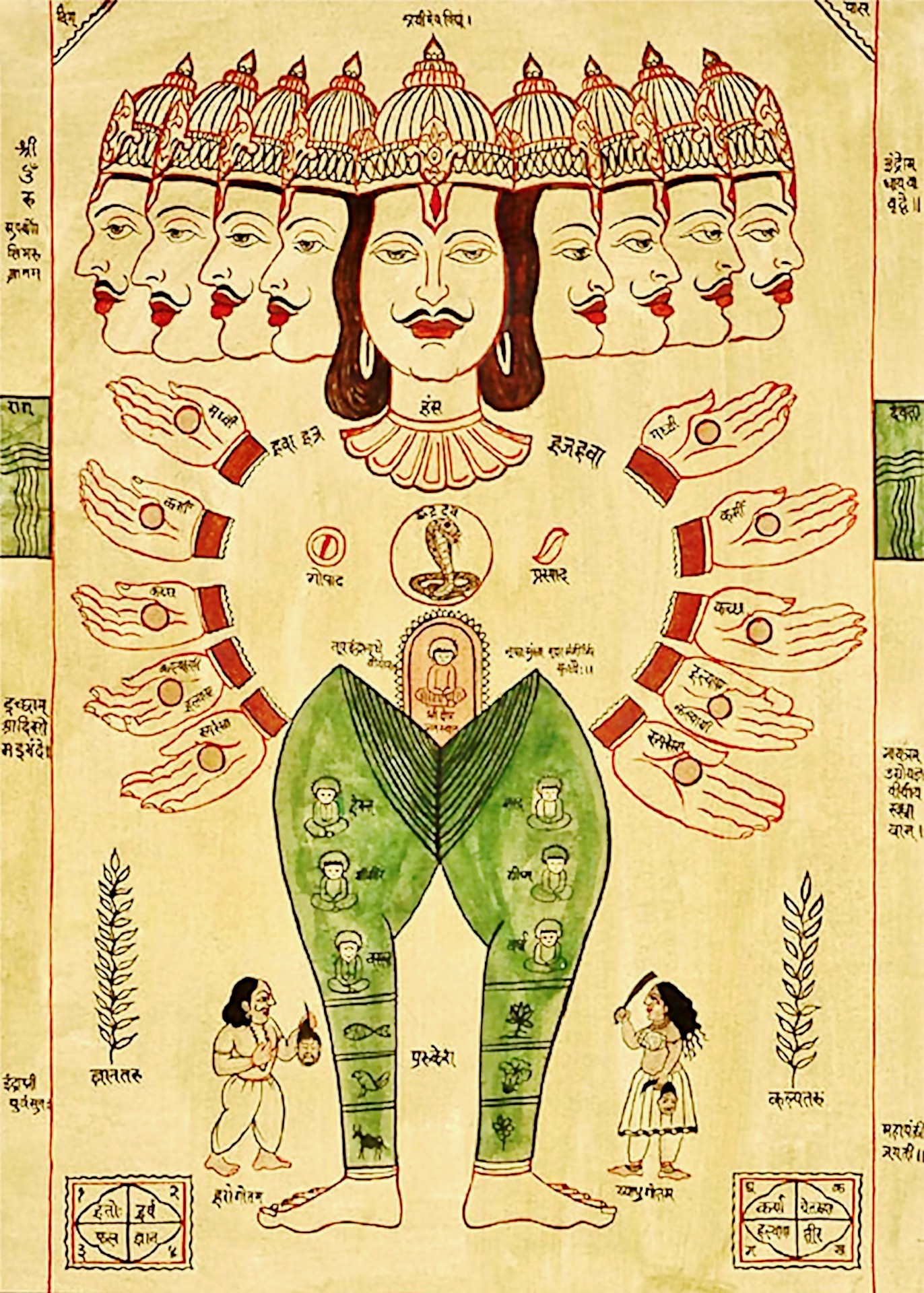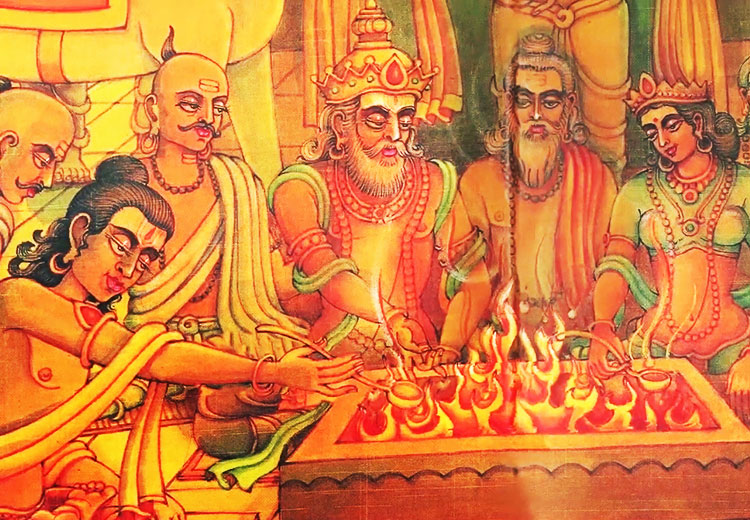Have you ever wondered how the ancient texts of the Vedas shape the spiritual and cultural landscape of Hinduism today?

The Vedas, which include the Rigveda, Yajurveda, Samaveda, and Atharvaveda, are way more than just old texts; they form the foundation of Hindu thought and practice.
Considered the oldest scriptures in Hinduism, these writings cover a huge range of topics, from hymns and rituals to deep philosophical ideas. Their teachings still resonate with millions today, shaping moral values, spiritual journeys, and social customs.
Explore The Four Vedas : The Pillars of Indian Knowledge and Spirituality Through This Blog.
If you want to really understand Hinduism and the vibrant culture of India, you must learn about Vedas. Come along as we explore these ancient writings and uncover the wisdom they offer to the world.
The Rig Veda: The Foundation of Divine Hymns
The Rig Veda is the oldest and most important of the four Vedas, believed to have been written around 1500 BCE. It consists of 1,028 hymns, or Suktas, divided into ten sections called Mandalas.
 These hymns mainly celebrate different gods, like Agni, the fire god, and Indra, the king of the gods, while also diving into deep philosophical and existential topics.
These hymns mainly celebrate different gods, like Agni, the fire god, and Indra, the king of the gods, while also diving into deep philosophical and existential topics.
Serving as a spiritual guide, the Rig Veda reflects the beliefs and traditions of early Vedic society. Its rich and poetic language has greatly influenced Indian literature and spirituality, making it a foundational text in Hindu culture.

Also, one of the most famous tales from the Rig Veda is the Purusha Sukta, which talks about the cosmic figure known as Purusha, the source of all creation. The hymn tells us that Purusha is a primordial man, and his sacrifice by the gods brought the universe into existence.

From his body, the four social classes emerged: the Brahmins (priests) from his mouth, the Kshatriyas (warriors) from his arms, the Vaishyas (merchants) from his thighs, and the Shudras (servants) from his feet.
This narrative highlights how all beings are connected and points to a divine foundation for social structure, showcasing the Vedic perspective on unity and diversity.

Importantly, it contains the famous Gayatri Mantra, a universal prayer for enlightenment, highlighting its ongoing relevance in modern spiritual practices.
The Yajur Veda: The Manual of Rituals and Sacrifices
The Yajur Veda, often called the “Veda of Sacrificial Rituals,” is divided into two key sections: the Shukla (White) and Krishna (Black) Yajurveda.
It provides thorough instructions and prose for performing rituals and sacrifices, emphasizing the need for proper ceremonial practices in Vedic culture.

This Veda serves as a practical resource for priests, outlining the methods and meanings behind various rituals. It goes beyond just the rituals, diving into the philosophy that connects human actions to the cosmic order.
Moreover, The Yajur Veda is linked to many rituals and sacrifices, and one notable story features King Harishchandra, , who was famous for his dedication to truth and justice. In this narrative, the sage Vishwamitra challenges him to give up his kingdom and family for the sake of truth.

Harishchandra accepted the challenge and ended up losing everything. But his commitment to truth caught the attention of the divine, and he was later restored to his throne. This story emphasizes the importance of dharma, or righteousness, and the ethical principles that guide Vedic rituals.
Additionally, the key mantras from the Yajur Veda, including the Shanti Path, advocate for peace and harmony, reflecting its role in promoting community and spiritual well-being.
checkout our another blog – https://itihaaskikhoj.in/the-ganges-a-divine-journey-through-hindu-history/
The Sama Veda: The Veda of Melodies and Chants
The next important Veda is Sam Veda, also known as the “Veda of Melodies,” it focuses on musical chants and hymns. It mainly features verses taken from the Rig Veda, organized for chanting during various rituals and ceremonies.

This Veda really highlights how important sound is in spiritual practices, showing that the auditory experience plays a key role in worship. Its hymns are meant to be sung, creating a beautiful vibe during religious events.
It also points out the link between music and spirituality, showing how melodies can lift the soul and enhance the worship experience. The Sama Veda’s reach goes beyond just rituals, influencing Indian classical music and dance, making it a significant part of India’s cultural heritage.
Another thing Sam Veda is famous for , is the Ashvamedha Yagna, which is all about horse sacrifice.

In this tale, a king carries out the Ashvamedha Yagna to show off his power and grow his territory. He sets a sacred horse free to wander wherever it likes, and wherever it goes, he claims that land as his own.
The Sama Veda provides the melodic chants that accompany this grand event, highlighting how crucial music is for calling upon divine blessings and ensuring the success of the sacrifice. This story really showcases how music, rituals, and kingship are all connected in Vedic culture.
Read – https://itihaaskikhoj.in/sacred-steps-to-moksha-chardham-yatra/
The Atharva Veda: The Tale of the Healing Herbs
The Atharva Veda is different from the other three Vedas because it covers a wider array of subjects, like magic, healing, and everyday life.
Written around 1200-1000 BCE, it features hymns, spells, and magical phrases that tackle practical issues such as health, wealth, and protection from harm.
This Veda captures the beliefs and practices of everyday people, offering a peek into the social and cultural dynamics of Vedic society. It covers everything from philosophical ideas to home rituals and charms for different situations, showcasing a more relatable and practical side of spirituality.
The Atharva Veda’s focus on daily life and well-being shows how the spiritual and material worlds are connected, making it an essential part of the Vedic tradition.

A popular story features the sage Atharva, who finds out about healing herbs. In this story, he learns from the divine about the healing powers of different plants and how they can treat various ailments.
Atharva then puts together these insights into hymns that act as chants for health and safety. This tale really shows how the Atharva Veda addresses daily issues and highlights the link between nature and human health, reflecting the comprehensive approach of Vedic teachings.
The Vedas and Their Influence on Hindu Philosophy
The Vedas are like the backbone of the six main schools of Hindu philosophy, called the Darshanas. These schools really lean on the Vedic texts to build their ideas and arguments.
For example, the Mimamsa school is all about figuring out the right way to interpret and use Vedic rituals, while Vedanta dives deep into the philosophical ideas found in the Upanishads.
Other schools, like Nyaya, Vaisheshika, Samkhya, and Yoga, also trace their origins back to Vedic teachings, bringing in concepts like logic, atomism, dualism, and how to practically apply spiritual ideas.
The lasting impact of the Vedas on these philosophies shows just how important and wise they are, continuing to influence Hindu thought and practices even today.
The Relevance of the Vedas in Modern Life
Even though the Vedas were written thousands of years ago, they still have a huge impact today. Their deep insights into reality, the self, and the divine create a timeless guide for spiritual growth and self-exploration.
The Vedas highlight how everything is connected, promoting a sense of unity and harmony that’s super relevant in our interconnected world. Plus, they provide practical advice on ethics, morality, and how to live well.
Concepts like dharma (doing the right thing), karma (the effects of our actions), and moksha (freedom from the cycle of life) act as guiding lights for anyone looking to live a meaningful life.
By bringing Vedic ideas into our daily lives, we can find inner peace, gain wisdom, and feel a sense of purpose, which ultimately helps improve society as a whole. The Vedas are a treasure trove of wisdom that goes beyond time and culture.
Conclusion
As we wrap the blog, the Four Vedas—Rig Veda, Yajur Veda, Samaveda, and Atharva Veda—are essential to Indian knowledge and spirituality. They provide deep insights that have shaped Hindu philosophy and culture for ages. Each Veda offers a different perspective on the universe, the divine, and human life, laying down a solid framework for rituals, ethics, and personal growth. Even in today’s fast-paced world, the lessons from the Vedas are super relevant, helping us find balance, wisdom, and a sense of self. By embracing the timeless wisdom found in these ancient texts, we can strengthen our connections with ourselves, our communities, and the universe. The Vedas not only reflect our past but also inspire a brighter future for everyone. If you have liked this blog then do not forget to checkout our website itihaaskikhoj

